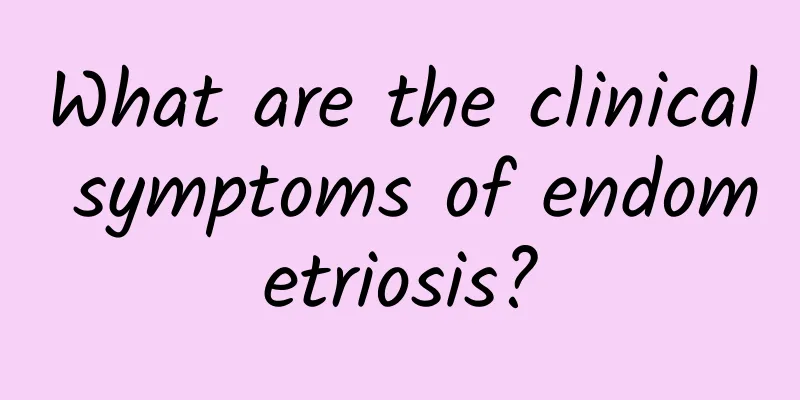What are the clinical symptoms of endometriosis?

|
Endometriosis has a serious impact on women's health, but endometriosis is similar to other gynecological diseases. So, what are the clinical symptoms of endometriosis? The clinical manifestations of endometriosis are: 1. Infertility: About 50% of endometriosis patients are accompanied by infertility. Among patients with unexplained infertility, about 30-40% suffer from endometriosis. Endometriosis causes infertility, which is often caused by pelvic masses, adhesions, fallopian tube blockage, poor follicle development or ovulation disorders caused by the disease; once pregnant, the ectopic endometrium is suppressed and atrophies, which plays a good role in the treatment of endometriosis. Some cases of habitual abortion are caused by endometriosis. 2. Dysmenorrhea: The clinical feature of endometriosis is progressive dysmenorrhea, which is a common and prominent feature. Most of them are secondary, that is, since the onset of endometriosis, patients complain that they did not have pain during menstruation in the past, but dysmenorrhea began to occur at a certain period, which can occur before, during and after menstruation. Some dysmenorrhea is severe and unbearable, requiring bed rest or medication for pain relief, and even causing pain to "roll on the bed" or hit the head. The pain often worsens with the menstrual cycle and disappears at the end of menstruation, but domestic reports show that about 21% of patients do not have dysmenorrhea. 3. Cyclic rectal irritation symptoms: The progressively aggravated cyclical rectal irritation symptoms are rarely seen in other gynecological diseases and are the most valuable symptoms for diagnosing this disease. The rectum, anus, and vulva are distended, painful, and feel tenesmus, and the frequency of bowel movements increases. As the lesion gradually worsens, the symptoms become more obvious, and disappear after menstruation. 4. Menstrual irregularity: Endometriosis patients often have shortened menstrual cycles, increased menstrual flow or prolonged menstrual periods, indicating that the patient has ovarian dysfunction. Menstrual irregularity can be used as a diagnostic reference, but it has no value in differential diagnosis. |
<<: When does adenomyosis require surgery?
>>: What are the symptoms and causes of having a large uterine fibroid during pregnancy?
Recommend
Experts introduce some common diagnostic methods for cervical erosion
Cervical erosion is a gynecological disease with ...
Is cervical erosion related to sexual life? Treatment of cervical erosion
Cervical erosion is a very common gynecological d...
How to treat threatened abortion in early pregnancy
Threatened miscarriage in early pregnancy is a ve...
What tests can detect congenital absence of vagina?
What kind of examination can detect congenital ab...
What are the dangers of ectopic pregnancy
Ectopic pregnancy is a common gynecological disea...
How many days after menstruation is the dangerous period? It's just a general rule
Generally speaking, the 7 days before and 8 days ...
Is fungal vaginitis serious?
Is fungal vaginitis serious? Candidiasis vaginiti...
What are the causes of cervicitis?
Have you ever heard of cervicitis? How much do yo...
The following are some of the factors that affect the price of abortion surgery:
The price of abortion surgery is a problem that m...
What is the reason for long menstrual periods?
What is the reason for long menstrual periods? Pr...
Introduction: Common methods for treating mild cervical erosion
Mild cervical erosion is a mild gynecological dis...
What are the correct ways to regulate irregular menstruation?
What are the correct ways to treat irregular mens...
Summary of Causes of Threatened Abortion
With the increase of working women in today's...
What causes ovarian cysts?
What are the causes of ovarian cysts? Ovarian cys...
Does intermittent fasting increase the risk of cardiovascular death? Huang Xuan: Two risk groups should avoid intermittent fasting
The rise in global obesity rates has attracted wi...









